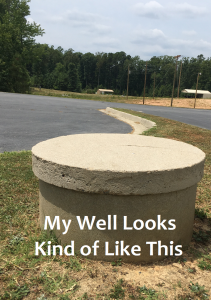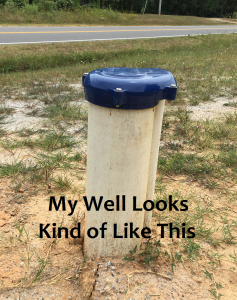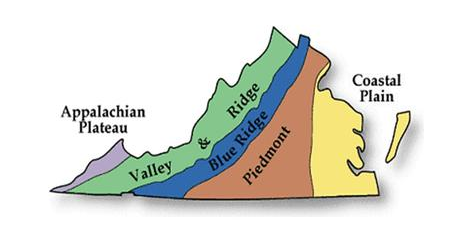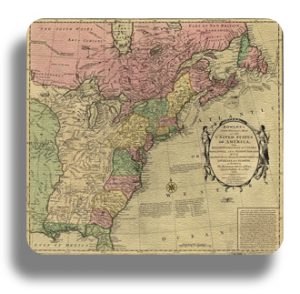 Learn More
Learn MoreYou have a BORED Well (or, possibly, a HAND DUG Well) Bored wells are generally shallow (<100 foot deep) wells that obtain water from near surface unconfined or “water table” aquifers. The well is typically constructed by using a bucket type rig to dig a 30″ diameter hole into the earth, generally between 45 and 70 feet in depth. Concrete well casing diameter is then lowered into the well in three to five foot long sections which fit together in a tongue and groove fashion and line the well from bottom to top. The tongue and groove connections are not water-tight and allow groundwater to enter the well. The area around the outside of the casing is then back- filled to at least 20 feet below the ground surface. Once this is done, cement grout is pumped around the outside of the casing from ground level down to 20 feet to prevent surface water or contaminants from entering the well. In addition, a layer of fine gravel is poured into the bottom of the well in order to prevent the water from become cloudy during heavy pumping cycles. This type well is generally less expensive than the drilled type well; however, it can be more susceptible to contamination from activities at the surface. |
 Learn More
Learn MoreYou have a DRILLED Well Drilled wells can be shallow or deep, and may obtain water from unconfined, or confined aquifers, including aquifers found in fractures in bedrock. The well is typically constructed with machines for rotary or percussion drilling. Drilled wells need to be installed with casing, typically either steel or plastic. This is to avoid the collapse and influx of sediments and other particles. Once the desired water horizon is reached, a well screen – defined as a section of casing having apertures allowing passage of water into the well – is placed. A filter pack (typically sand) is placed outside the screen to filter groundwater entering the well. Once this is done, cement grout is pumped around the outside of the casing from the top of the filter pack to the ground surface to prevent surface water or contaminants from entering the well. Generally, drilled wells are less susceptible to contamination from activities at the surface, and can access more sources of groundwater than can bored wells. |
What is the Relationship Between Where I Live and My Well?

There is a significant relationship because groundwater in Virginia occurs under a variety of conditions.
If you live in the COASTAL PLAIN (generally found east of Interstate 95), then the land beneath you consists of multiple layers of unconsolidated sediments (clays, silts, sands, and gravels) which grow thicker as you move towards the Atlantic Ocean. Your well is obtaining water from one of these layers of sediments. If it is shallow, your well is most likely tapping the unconfined aquifer. Deeper in the Coastal Plain are found various confined aquifers, separated by relatively impermeable formations of clay rich materials which act as barriers to vertical groundwater movement. If you have a deep well, it is obtaining groundwater from one of these confined sources.
If you live in the PIEDMONT (between Interstate 95 and the Blue Ridge Mountains), then the land beneath you consists of a veneer of soil and thin sediment above igneous or metamorphic bedrock (although there are some areas where sedimentary rock occurs over igneous/metamorphic bedrock). Your well could be obtaining water from near surface sediments, weathered bedrock, or fractures within the bedrock itself.
If you live in the BLUE RIDGE MOUNTAINS, then the land beneath you is primarily hard volcanic rock. Your well could be obtaining water from near surface sediments, weathered bedrock, or fractures within the bedrock itself.
If you live in the VALLEY AND RIDGE, then the land beneath you consists of a veneer of soil and sediment above sedimentary rocks such as sandstone, limestone, dolomite and shale. Your well could be obtaining water from near surface sediments, weathered bedrock, or fractures within the bedrock itself. In Karst areas (where limestone is dissolved and caves are prevalent), your well might be at elevated risk of contamination because water from the surface can enter karst bedrock and become part of shallow aquifers more readily than in non-karst areas.
If you live in the APPALACHIAN PLATEAU, then the land beneath you consists of a veneer of soil and sediment above non-carbonate sedimentary rocks such as sandstone, shale, and coal. Your well could be obtaining water from near surface sediments, weathered bedrock, or fractures within the bedrock itself.
A Historical Perspective
The First Public Health Protection Rule in America
“There shall be no man or woman, Launderer or Launderesse, dare to wash any uncleane Linnen, drive bucks, or throw out the water or suds of fowle cloathes, in the open streete, within the Pallizadoes, or within forty foote of the same, nor rench, and make cleane, any kettle, pot or pan, or such like vessel within twenty foote of the olde well, or new pumpe.”1
The year was 1610. This was over 400 years ago! The rule was made by the Military Governor at Jamestown where early settlers had set up a military fort. Their rule was made because of the need to protect the quality of the well water. We knew all those years ago that the best way to protect drinking water is to keep contamination away from the well.
The same is just as true today as it was then.
1“Articles, Lawes, and Orders, Divine, Politique, and Martiall for the Colony of Virginia.” in Peter Force, ed. Tracts and Other Papers, Relating Principally to the Origin, Settlement, and Progress of the Colonies in North America, From the Discovery of the Country to the Year 1776. 4 vols. (Washington, D.C.: 1836 reprint, Gloucester, Massachusetts: Peter Smith, 1963).III.9-19.
